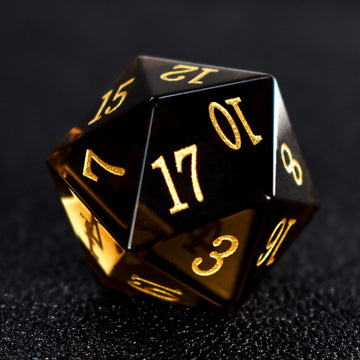Dice have always been central to the world of tabletop role-playing games, particularly in Dungeons & Dragons (DND). But how often do we consider whether our dice are truly fair and precise? For many players, fairness in rolling dice is crucial to ensuring a balanced and enjoyable game. In this article, we will explore how to test your DND dice for precision, how fairness is determined scientifically, and provide some actionable methods to ensure your dice are as random and unbiased as possible.
Why Dice Precision Matters
Dice rolls in DND decide the outcomes of pivotal moments—combat, skill checks, saving throws—so it's important that your dice offer truly random results. Uneven weighting or imperfections in the design can bias rolls, leading to unfair gameplay. This is particularly concerning for competitive players or anyone looking for a game where luck, rather than faulty equipment, determines the outcome.
How to Test Your Dice for Fairness
There are several methods for testing the fairness and precision of DND dice, each with varying degrees of simplicity and scientific rigor.
1. Float Test
The simplest method is the "float test," which involves placing your dice in a cup of water with added salt to increase buoyancy. A perfectly fair die should rotate and land on various sides, not favoring a particular face.(This method can also be used to test the quality of eggs and seeds.)
How to Perform the Float Test:
- Dissolve enough salt in a cup of water until your dice float.
- Spin the dice gently in the water.
- Watch for any faces that repeatedly float to the top, indicating that the opposite side may be heavier.
- This method may not work with metal dice or other heavy dice.
Limitations: While this test is easy, it's not highly precise. A weighted face might not be heavy enough to always appear on the bottom, and small imperfections in buoyancy could skew the results.
2. Chi-Square Statistical Test
For a more mathematically rigorous test, the chi-square test allows you to measure whether the distribution of your dice rolls deviates significantly from a random distribution. This is the preferred method for serious players and those looking to provide definitive proof of dice fairness.
How to Perform a Chi-Square Test:
- Roll the die at least 100 times, recording the results.
- Compare the frequency of each number appearing with the expected outcome (which should be equal for all faces on a fair die).
- Use a chi-square calculator to determine if the results show a statistically significant deviation from randomness.
- The more times you roll, the more accurate the data you get.
You can find online chi-square calculators, such as this one here, which will allow you to input your observed values to check for fairness.
3. Roll Consistency Over Time
Another way to test dice precision is through repeated roll tests over time. Roll your dice hundreds or even thousands of times (you can automate this with dice rolling machines or online programs). If, after extensive testing, certain numbers appear significantly more or less often than others, this could be a sign of bias.
This method was popularized by a study from a casino industry expert, where they tested thousands of dice rolls to check for consistent biases. Many professional casino dice undergo these kinds of rigorous tests before being approved for use in games of chance .
What Causes Dice Bias?
Several factors can contribute to biased dice:
- Manufacturing imperfections: Tiny air bubbles inside resin or plastic dice can skew the weight distribution.
- Uneven faces: Dice with uneven surfaces due to imperfections in the molding process will favor certain sides.
- Material issues: Metal and gemstone dice, while durable, can sometimes be less evenly weighted than plastic dice. Hollow metal dice, for instance, may have internal inconsistencies that affect rolling.
How to Improve Dice Fairness
If you find your dice to be unfair or imprecise, there are a few solutions:
- Use precision dice: Precision dice are manufactured with a higher degree of accuracy, ensuring balanced sides and weight distribution. These are commonly used in casinos and are now available for tabletop RPG players.
- Regular testing: Performing regular roll tests on your dice will help you spot any biases before they affect your game.
- Rotate dice sets: Using multiple sets of dice during a game can help reduce the influence of any one set's bias on your gameplay.
Conclusion
Testing your dice for precision and fairness is an essential practice for dedicated DND players. By using methods like the float test, chi-square analysis, and roll consistency checks, you can ensure that your dice provide truly random results. And while no physical object is perfect, understanding and addressing potential biases will lead to a more balanced and enjoyable gaming experience.
So, if a dice isn’t considered "precise," does that necessarily mean it’s a bad die? Different dice are created for different purposes—not all are made for fairness. Some are designed for their unique aesthetics, while others are meant to catch the eye with their striking appearance. They’re used in a variety of contexts, whether as decorative pieces, casual gaming tools among friends, or even for professional D&D tournaments. Ultimately, it all depends on what you need. After all, this is part of your grand adventure.


